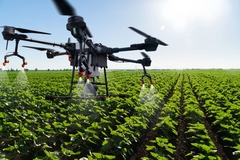New EC Gluten Labeling Regulations Come Into Force
This regulation will apply to all foods, both those sold as pre-packed and those foods which are not pre-packed (e.g. foods sold in bakeries and restaurants).

Jan 2 2012 --- Commission Regulation (EC) No 41/2009 came into full force from January 1st 2012. It is intended to clarify exactly when and how to label foods as “gluten-free”, setting limits for use of terms such as 'gluten-free' and 'very low gluten'. Products that don't comply will have to be removed from sale. This regulation will apply to all foods, both those sold as pre-packed and those foods which are not pre-packed (e.g. foods sold in bakeries and restaurants).
The key to keeping within the law will be to establish the gluten content of any ingredients, and also of the finished product. To this end, manufacturers should look to practice careful ingredient handling (particularly in facilities making a range of products) supported by accurate laboratory testing.
According to Simon Flanagan, Food Safety Consultant at RSSL, "Many of the procedures applicable to safe handling of allergenic ingredients are equally applicable to handling of ingredients containing gluten. Since risk assessment forms the basis of the most practical and useful approach to allergen management, the same applies to gluten management." RSSL has developed its own quantitative risk assessment toolkit, which is an evolution of existing best practice guidance and this has proved extremely useful in evaluating the premises and practices of a diverse range of food manufacturing companies. This approach provides documented evidence in support of labelling statements, and more importantly, is the precursor to developing a consistent approach to gluten management, and improving ingredient sourcing and handling.
RSSL is also keen to stress that processing does not change the 'toxicity' of gluten, but it can affect how easy it is to extract and detect gluten in finished products. Hence great care must be taken in the acquisition and interpretation of laboratory results. "It is absolutely essential that any laboratory validate its methods for testing for gluten to avoid the risk of false positive or false negative results," adds Simon.
The recommended method of analysis, approved by the Codex Committee on Methodology, Sampling and Analysis (CCMAS) is the R5-sandwich ELISA (Mendez method). This is an immunochemical assay based on a monoclonal antibody reacting with a specific sequence of peptides from the gluten protein. However, even this method is not foolproof and occasional analytical problems arise from heated or hydrolysed products. Also, the influence of the actual food matrix must always be taken in to account. The key observation is repeated that in all cases, it is important to validate the method for the particular ingredient/product concerned.
"Complying with the new Regulation should be fairly easy for most food manufacturers and suppliers of non pre-packed foods provided they observe the basic, best-practice principles in ingredient handling and laboratory analysis," concludes Simon.












